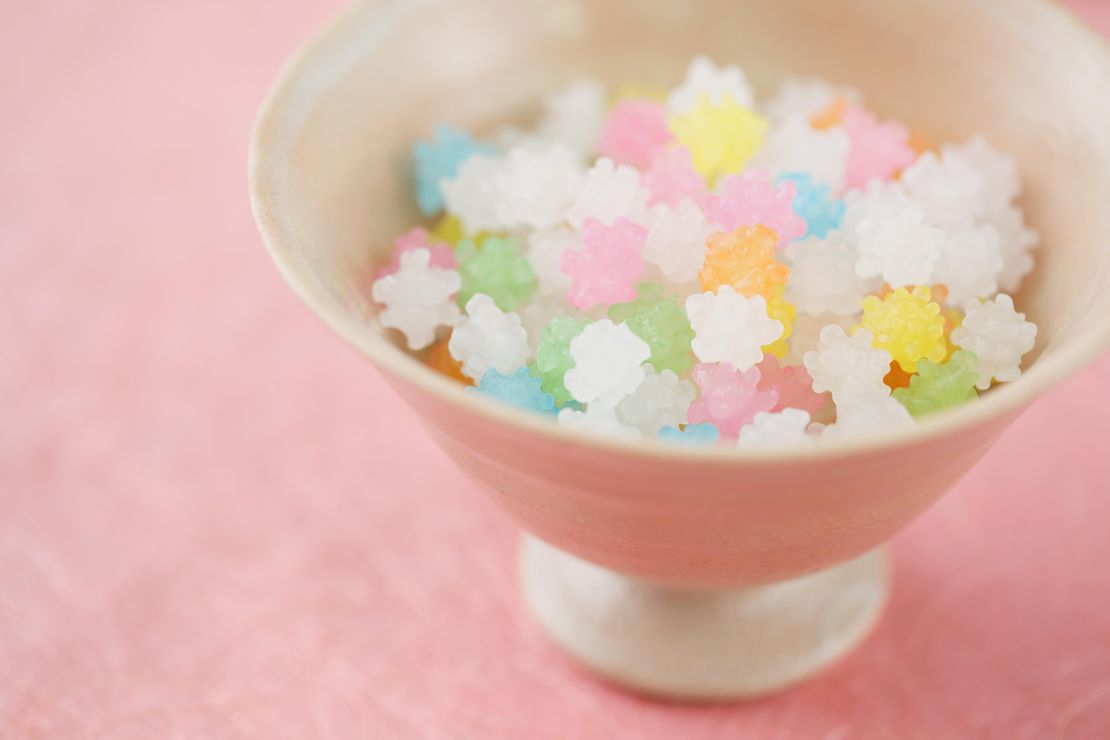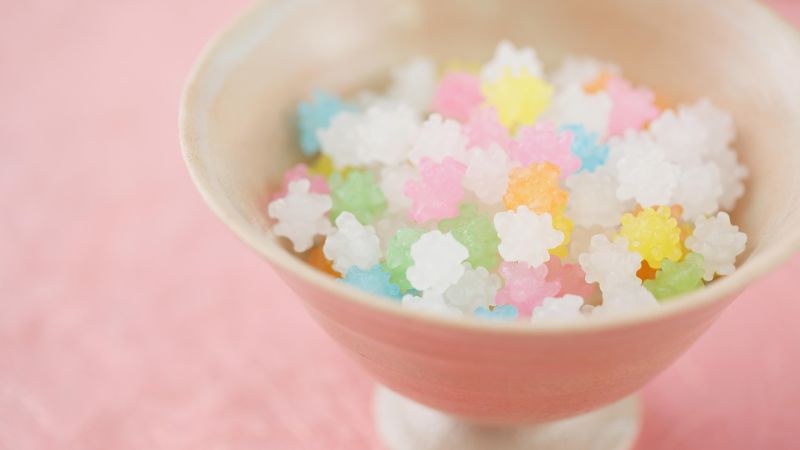Editor’s Note: This CNN Travel series is, or was, sponsored by the destination it highlights. CNN retains full editorial control over subject matter, reporting and frequency of the articles and videos within the sponsorship, in compliance with our policy.
There is a legend that a group of Portuguese monks were sailing to Macao when their ship hit bad weather and they landed in Nagasaki, Japan, instead.
That accidental encounter ended up changing Japan – and its food – forever. One thing these monks, and the many Portuguese who would come after them, brought to the country was a simple, powerful and much-loved ingredient – sugar.
During the 16th century, Nagasaki, on the island of Kyushu, was the only city through which foreigners could trade with the Japanese. As a result, it developed the strongest sweet tooth.
Many of Japan’s present-day favorite wagashi – sweets – have their origins on Kyushu.
One of these is castella, a Portuguese-inspired pound cake. Though the style of making pound cake came via Portugal, one ingredient makes it specifically Japanese: mizuame syrup, which is made from glutinous rice.
The best place to snag some for yourself is at Fukusaya. It’s a well-known cake shop chain, with the first location opening – where else? – in Nagasaki in 1624. In Fukuoka, the largest city on the island of Kyushu, Fukusaya’s main branch is in the busy Akasaka neighborhood, not far from where tourists spill into the city from Hakata Station, western terminus of the Shinkansen high-speed train line.
The castella here are cut into cubes, individually wrapped in colorful packaging and placed into gift boxes.
Though there are occasional special flavors like sakura (cherry blossom) in the spring or chocolate around Christmas, it’s the classic castella that still sells the most, according to an Akasaka employee.
Castella (kasutera in Japanese) also makes an appearance in another popular Japanese sweet, dorayaki. Here, the castella cake is thinner and made into a pancake with a layer of sweet red bean paste inside.
Another European sweet that got the Japanese treatment is macarons.
The local version, which is sometimes anglicized as makaron, is made with peanut flour instead of almond flour, and usually include traditional Japanese flavors like green tea or red bean.
“I think the Japanese really like European pastries, especially French ones,” says Michele Abbatemarco, Est restaurant’s pastry chef at the Four Seasons Tokyo at Otemachi.
And that appreciation works both ways.
“In the last 50 years, there’s been a big evolution of pastries here in Japan. And then, there are quite a few patisseries in Europe and all over the world that are, in turn, inspired by Japanese products,” he adds.
A Kyushu brand famed for its Europe-crossed-with-Japan sweets is Kitajima, whose flagship shop is in Saga City.
Be on the lookout for Portugese-inspired marubolo cookies made with honey, French-style madeleines with walnuts added for texture, and Margaret cakes, made with almond flour and made to look like a big flower.

One of Japan’s most popular and easily recognizable candies are konpeito. These small, pastel-hued sugar treats look like crystalline stars or flowers. The name is said to come from the Portuguese word for a type of sugar candy called confeito, which was brought to Japan by sugar merchants.
Their size isn’t just about making the candies more “cute,” though – sugar was so expensive that even a small treat was extremely precious.
Expensive ingredients have connections to rich and powerful people. In Japan, there’s no more powerful clan than the Imperial Family, headed by the Emperor and Empress.
It’s a tradition for guests of the Imperial family – such as heads of state and other royals – to receive sterling silver candy boxes called bonbonnieres (French for “candy box”) as welcome gifts when they attend important events like weddings or the “feast ceremony” when a new emperor is crowned.
These bonbonnieres are specially made by Tokyo silversmith company Miyamoto Shoko, and they’re decorated with a chrysanthemum, the royal family’s emblem. Inside, the lucky recipients – who have recently included the kings and queens of Spain, the Netherlands, and England – will find konpeito.
These days, though, some chefs in Japan are trying to resurrect the local products that were used before the importation of sugar.
Abbatemarco is one of them. During the decade-plus that he has been based in Japan, he has been able to source some of the rare honeys that were used to sweeten foods before the arrival of sugar.
At Est, the Four Seasons’ Michelin-starred French restaurant, Abbatemarco and his team serve petits fours flavored with buckwheat honey, soba honey, wasanbon (a fine-grained white sugar) and other hard-to-find local delicacies.
For him, it’s a way of honoring Japan’s small producers, in addition to introducing these flavors to the hotel’s guests.
These days, foreign travelers are more likely to arrive in Japan via an airplane than by a sailing ship. But many of them still have sweet tooths.
Read the full article here


